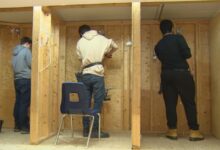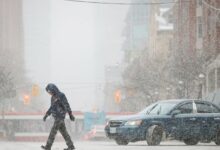U of O students prepare to sit year out due to OSAP cuts
As the university year gets underway, the consequences of the cut to Ontario’s student grant and loan program are becoming clear — particularly for students from low-income families.
A number of University of Ottawa students say they’ve had to alter their course loads because of the $600-million cut to the Ontario Student Assistance Program (OSAP).
Others, like political science student James Casey, have decided to sit out the year to make ends meet.
“It’s very frustrating and very stressful,” said Casey, who this month was supposed to begin his third year.
Casey, who qualifies as a low-income student, said he knew he was in trouble when his OSAP grant was about $2,000 less than last year.
“I was on track to go back to school full time. But these cuts have been an enormous step back on the amount of time it’s going to take to graduate.”
PCs say program was unsustainable
The previous Liberal government’s program effectively offered free tuition to students from families making less than $50,000 a year.
The new Progressive Conservative government decided the program was unsustainable, however, slashing OSAP’s budget by 40 per cent.
“To do nothing to ensure the long-term sustainability of the Ontario Student Assistance Program would have been irresponsible,” said Ross Romano, the new minister of training, colleges and universities, in a statement to CBC.
Romano said Ontario’s auditor general had pointed out the free tuition strategy could see the cost of the program double to $2 billion by the 2020-21 school year.
The province has replaced it with an across-the-board tuition cut of 10 per cent.
Most of the grants will still go to students whose families make less than $50,000 year, but those students won’t receive grants alone — they’ll get a mixture of grants and loans.
“That’s why we’re ensuring that OSAP is sustainable, so that generations of future students can access a high-quality education and contribute to Ontario’s future success,” Romano said in his statement.
Delays cause scramble
The change however, has caused confusion and delays in the early assessments for students’ loans and grants.
First-year University of Ottawa student Abiha Sajid said she only learned last week her funding would be almost $1,000 short of what she was told earlier in the year — not enough to cover tuition.
Sajid, who hopes to become a human rights lawyer, was raised by a single mother and is the first in her family to attend university.
Like Casey, she qualified as a low-income student.
She’s now scrambling to find a part-time job so she can pay her tuition by the end of the month.
“I’m honestly really stressed out because I don’t know if I can afford to attend school this year,” she said.
“We were counting on at least the tuition being covered.”
Students organize
Other students are making less drastic choices, like reducing their course load or considering switching to part time.
“When I found out that it was affecting me too, it was a big shock,” said Jaime McInnis, who’s studying to become a French-as-a-second-language teacher.
McInnis is worried she’ll be forced to drop one or more courses so she can work part time, which would delay her graduation by another year.
She said she’ll have to assess whether she can handle the current load before the deadline to drop courses arrives.
So will theatre student Anne Hamels, who is also seeking a second job.
The pair are organizing a march to Parliament Hill next Tuesday over the OSAP cuts, with about 500 students signed up on social media.
The Carleton University Student Association will also continue to lobby for expanded funding to OSAP and is focused on increasing financial literacy for students trying to navigate their degrees with less money.
“I know lots of students personally affected by cuts,” said CUSA president Lily Akagbosu. “We’re seeing that more and more people are taking longer to finish their degrees.”
Queen’s Park petition
The Ontario Liberals have launched an online petition for students and their families, calling for a return to the previous investment in OSAP.
Michael Coteau, MPP for Don Valley East and one of the party’s leadership candidates, said he’s concerned enrolment may be affected by the reduced access to grants.
That won’t be clearly understood until later in the fall, when the schools release their final numbers.
Early indications from Ontario Universities’ Application Centre, however, suggest university applications are continuing their five-year upward trend.
Even so, Coteau said the province needs to track the impact of the cuts to low-income students in particular, since one of the aims of expanding OSAP was to increase accessibility.
The program was also supposed to help relieve the burden of student debt on low-income and middle-income families, he added.
“The student loan reforms also took debt off the backs of students and [Premier Doug] Ford is simply putting it back on the backs of those students and their families,” said Coteau.
“It doesn’t allow the province to reach its economic potential.”








Redes Sociais - Comentários